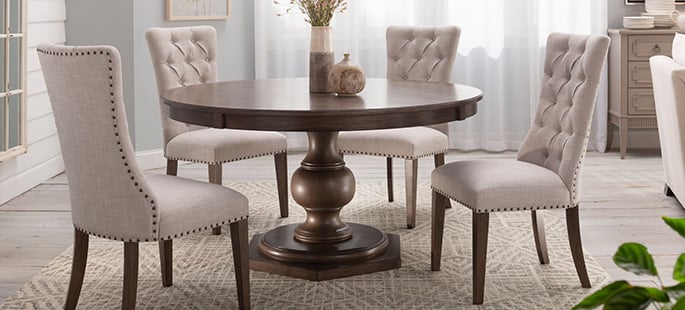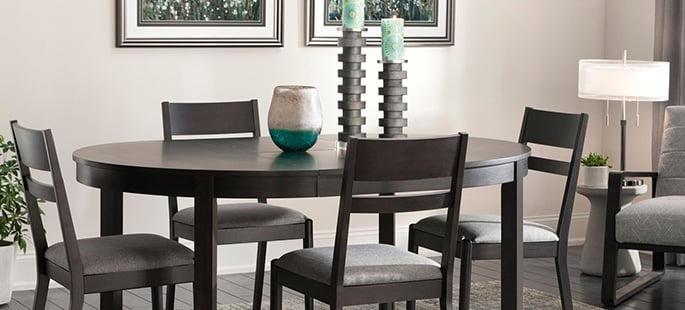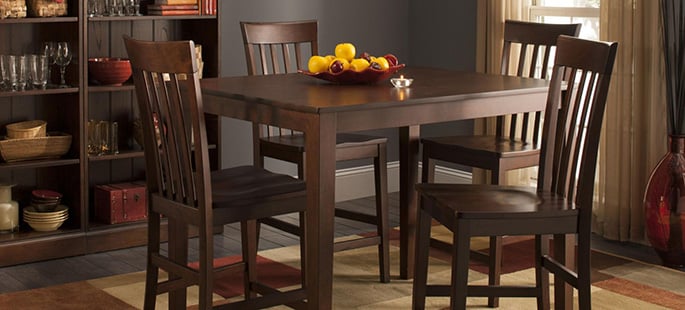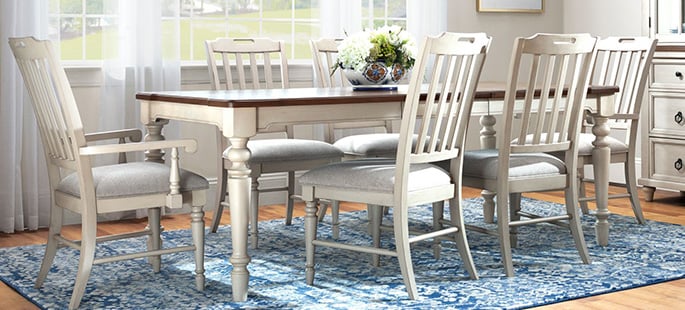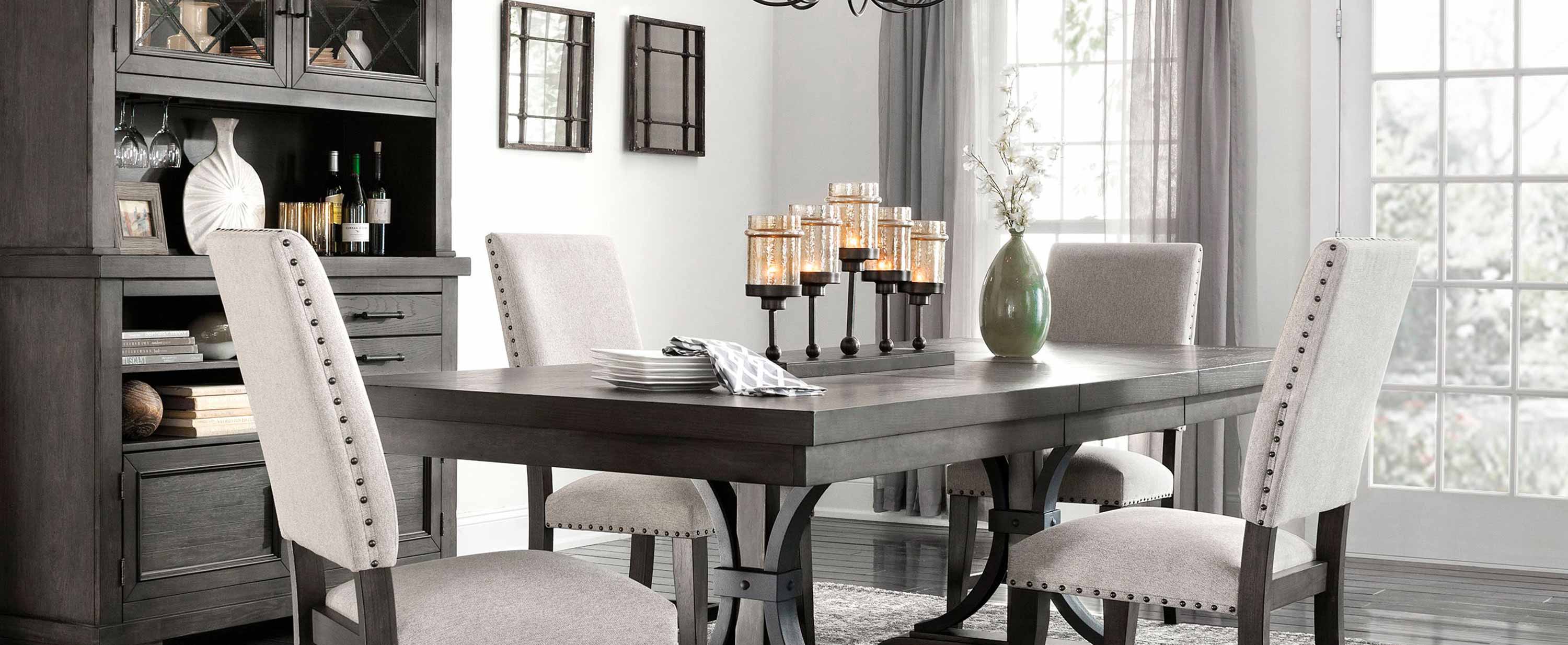What to Consider When Choosing a Dining Table
Style isn't the only thing that counts when choosing a dining room table—size also matters. The dimensions of your dining room table will depend on how much space you have to work with and how many people you expect to have around the table for meals.
Unsure of where to start? We've got you covered! Here are some things to consider when deciding on a dining table.

6 Questions To Ask When Choosing a Dining Table Size
Before you purchase a dining room table, it's important to make sure it will meet your needs. Here are six questions to ask yourself in the process:
- How big is your dining room or eat-in kitchen area? Ideally, you want to have at least three feet of space on every side of your table so you can comfortably pull chairs in and out and sit down, as well as have room to serve food and drink to the table. So start by measuring your dining room or eat-in kitchen space before choosing a table. If your room is modest, there are certain things you should know before selecting a dining table for a small space.
- Where is your dining table going? Location can also play a role in your choice. Dining tables intended for eat-in kitchen spaces rarely accommodate more than four to six people, whereas a table in a formal dining room can easily seat eight, 10, 12, or even more guests for dinner.
- How many people live in your household? Even for on-the-go households, there are times when everyone will want a seat at the table. If you're a family of four, it goes without saying that a table for four should be the absolute minimum. But it never hurts to have extra room for guests, so go bigger if space allows.
- How many dinner guests do you tend to invite? Think about the size of your extended family and friend group, then choose your dining table size and seating accordingly, especially when choosing a table for a formal dining room.
- How often do you host large family gatherings or big sit-down meals? A dining table that seats four to six people can be perfectly adequate for everyday use, but you'll need a lot more room for holiday meals or big dinner parties with friends. In many households, it makes sense to have a smaller table for everyday family meals and a larger table in the formal dining room for bigger events. If your house has only one dedicated dining space, however, it may make more sense to buy a dining table with leaves, which can expand your seating capacity to accommodate more guests.
- Do you have a sideboard or other furniture that can be used for serving dishes? If not, you'll need to choose a table that's big enough to accommodate all of your serving dishes along with the place settings for every guest.
Choosing the Right Shape for Your Dining Room Table
Dining room tables usually come in one of four shapes—round, square, oval and rectangular.
- Round tables tend to work best in small spaces where only limited seating is needed.
- Square tables are ideal for square rooms where intimate seating is desired. Four seats are typical around a square table.
- Oval tables are good in small or narrow rooms and typically offer more seating than round or square tables.
- Rectangular tables are ideal for long, narrow rooms (most dining rooms are rectangular) and offer more seating potential than any other shape of dining room table.
Picking the Right Dimensions for Your Dining Room Table
Dining room tables come in standardized sizes, and nearly all stand 28–30 inches tall. But length and width can vary depending on the shape of the table. Here's what to keep in mind.
Round dining room tables:
- Seating four people: 36- to 44-inch diameter
- Seating four to six people: 44- to 54-inch diameter
- Seating six to eight people: 54- to 72-inch diameter
Oval dining room tables:
- Seating four to six people: 36-inch diameter minimum by 56 inches long
- Seating six to eight people: 36-inch diameter minimum by 72 inches long
- Seating eight to 10 people: 36-inch diameter minimum by 84 inches long
Square dining room tables:
- Seating four people: 36- to 33-inch square
Rectangular dining room tables:
- Seating four people: 36 inches wide by 48 inches long
- Seating four to six people: 36 inches wide by 60 inches long
- Seating six to eight people: 36 inches wide by 78 inches long
If you tend to have fewer people around the table, consider a square or small round table to facilitate interaction and conversation during meals. For larger meals, a rectangular table can actually be more intimate than a large round or oval table, where fellow diners can feel physically distant.
Keep in mind that oval and rectangular dining room tables may come with removable leaves that can allow seating capacity to be expanded or reduced according to need. And of course, depending on your needs and home layout, you may want more than one dining room table—a smaller, more informal one for the eat-in kitchen and a larger, more spacious table for your formal dining room.
Your dining room table is a place for your family to gather for nightly meals and holidays. It's important that it fits the whole family comfortably, while being stylish to boot.
